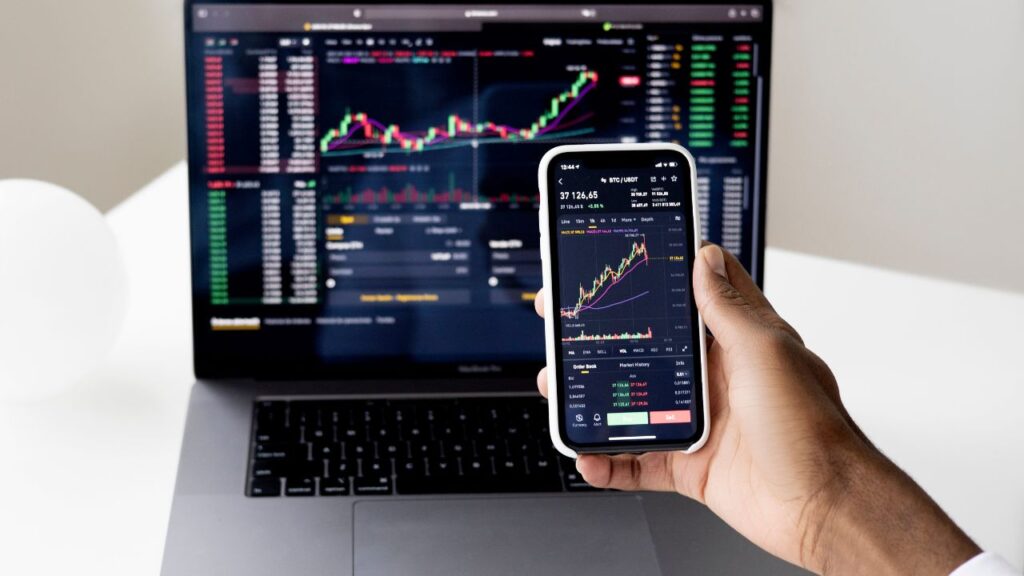“Not your keys, not your coins.” That one line explains why a wallet matters more than any hot tip or shiny token. In this guide, I’ll show you exactly how to set up a crypto wallet for investing — from choosing between custodial vs. non-custodial, to backing up your seed phrase, to funding and making your first transaction. We’ll keep it practical, safe, and beginner-friendly. Short, snappy steps meet deeper context where it counts!
🚀 Explore Project Serenity and see if it’s right for your crypto journey
🔒 What You Need Before You Start (Security Basics)
🖥 Internet Hygiene
- Use unique, complex passwords for all accounts — avoid reusing the same password across platforms.
- Store passwords in a reputable password manager (e.g., 1Password, LastPass, Bitwarden) to reduce the risk of breaches.
- Keep your devices updated with the latest OS and security patches.
- Run regular malware and antivirus scans to detect threats early.
🔑 Enable Two-Factor Authentication (2FA)
- Set up 2FA with an authenticator app like Google Authenticator or Authy for your email and exchange accounts.
- Avoid SMS-based 2FA due to SIM-swap risks.
- Back up your 2FA codes or recovery keys securely.
🛡 Decide Custody Model
- Custodial Wallets: Third party (e.g., exchange) controls your keys; easier to recover but higher counterparty risk.
- Non-Custodial Wallets: You control your keys; safer from third-party failure but requires secure backups.
- Choose between hot wallets (internet-connected for convenience) and cold wallets (offline for maximum security).
🎯 Set Investing Goal
- Long-Term Holding (HODL): Minimal transactions, focus on cold storage and high security.
- Active Trading: Prioritize speed and liquidity, likely with a mix of hot and cold wallets.
- DeFi/NFT Use: Wallet must support DApps, token standards (ERC-20, ERC-721), and multiple networks.
✅ Get full access to Marco Wutzer’s Project Serenity here
🗝 Choose the Right Wallet Type (Custodial vs Non-Custodial, Hot vs Cold)

🤝 Custodial Wallets
- Managed by a third party (e.g., crypto exchange or service provider).
- Pros: Easy account recovery, user-friendly interfaces, built-in trading features.
- Cons: You don’t control the private keys; assets depend on the platform’s security and solvency.
- Best for beginners or short-term traders needing fast access to funds.
🔐 Non-Custodial Wallets
- You control the private keys and therefore have full ownership of your funds.
- Pros: Higher security, immune to exchange failures, works with most DApps.
- Cons: You are fully responsible for backups and seed phrase protection.
- Ideal for long-term holders, DeFi users, and those prioritizing self-custody.
🌐 Hot Wallets (Mobile/Web)
- Internet-connected wallets for quick access and transactions.
- Pros: Fast setup, convenient for frequent trading or DeFi participation.
- Cons: More vulnerable to hacking and phishing attacks.
- Great for active traders and small to medium crypto balances.
🧊 Cold Wallets (Hardware/Air-Gapped)
- Offline wallets such as Ledger or Trezor for maximum protection.
- Pros: Immune to most online threats, perfect for storing large amounts.
- Cons: Higher cost, slower access, less convenient for frequent trades.
- Best for long-term storage and high-value portfolios.
🎯 Match Wallet Type to Your Use Case
- Long-Term Holding: Cold wallet or high-security non-custodial wallet.
- Frequent Trading: Hot custodial wallet for speed and liquidity.
- DeFi/NFT Use: Non-custodial hot wallet compatible with desired blockchain networks.
- Mixed Strategy: Combine hot and cold wallets for flexibility and security.
📈 Discover early-stage crypto picks inside Project Serenity
🛠 Pick a Wallet Brand (Compatibility & Ecosystems)
📱 Mobile/Web Wallets
- MetaMask: Popular Ethereum and EVM-compatible wallet, ideal for DeFi and NFT users.
- Trust Wallet: Multi-chain support with built-in DApp browser and staking features.
- Coinbase Wallet: User-friendly interface, strong integration with Coinbase exchange, supports NFTs.
- Phantom: Designed for the Solana ecosystem with simple NFT and DeFi access.
- Keplr: Cosmos ecosystem wallet with staking and governance tools.
💾 Hardware Wallets
- Ledger (Nano X/S Plus): Widely trusted, supports 5,500+ assets, integrates with many DApps.
- Trezor (Model T/One): Open-source firmware, intuitive UI, supports multiple coins and tokens.
- Keystone: Air-gapped hardware wallet with QR code signing for enhanced security.
🔗 Chain Support
- Check if the wallet supports your target blockchains:
- Bitcoin (BTC)
- Ethereum (ETH)
- Solana (SOL)
- Polygon (MATIC)
- Binance Smart Chain (BSC)
- Other Layer 1 & Layer 2 networks relevant to your portfolio.
⚙ DApp Integrations & Features
- Built-in or compatible DApp browsers for DeFi and NFT platforms.
- Staking support for earning yield directly from the wallet.
- Low or transparent transaction fee management tools.
- Open-source code for transparency and community audits.
- Third-party security audits for trust and reliability.
🔍 See what Project Serenity has to offer crypto investors like you
📱 Set Up a Mobile Wallet (iOS/Android)

📥 Download from the Official Source
- Get the app only from the official app store (Google Play or Apple App Store) or the developer’s verified website.
- Double-check the publisher name and reviews to avoid fake apps.
- Verify app permissions before installation.
🆕 Create a Wallet & Secure Your Seed Phrase
- Tap “Create New Wallet” to generate a fresh wallet.
- Write down the seed phrase (12 or 24 words) offline — no screenshots, photos, or cloud storage.
- Store the seed phrase in a secure, private location.
🔒 Enable Security Settings
- Set a strong PIN and activate biometric authentication (fingerprint or Face ID).
- Turn on privacy settings like transaction hiding, address rotation, or phishing protection (if available).
🌐 Add Networks & Tokens
- Add supported blockchain networks (e.g., Ethereum, Polygon, Binance Smart Chain) as needed.
- Manually import tokens by pasting the correct contract address if they don’t appear automatically.
- Test your wallet by receiving a small transaction first to ensure it’s working properly.
💰 Join Project Serenity and start investing with a strategy
💽 Set Up a Hardware Wallet (Cold Storage)
📦 Unbox & Verify Device
- Carefully unbox the hardware wallet and check for any anti-tamper seals or packaging issues.
- Only download firmware and companion software from the official manufacturer’s website.
- Update firmware immediately to the latest version to patch security vulnerabilities.
📝 Generate Seed Phrase Offline
- Follow the device prompts to generate a new seed phrase (12, 18, or 24 words) entirely offline.
- Write it down clearly and store it offline — never take photos or store it digitally.
- Consider upgrading to a metal seed backup for fire, water, and impact resistance.
🔐 Create PIN & Optional Passphrase
- Set a strong device PIN that’s difficult to guess.
- For additional privacy, enable an optional passphrase (25th word) to create a hidden wallet vault.
- Memorize or securely store this passphrase separately from your seed phrase.
🔗 Connect & Test
- Connect the device to its official companion app (e.g., Ledger Live, Trezor Suite).
- Add desired accounts and supported blockchain networks.
- Perform a small test receive transaction to confirm proper setup before transferring larger funds.
🧠 Unlock Marco Wutzer’s T4 investment strategy here
🖥 Set Up a Desktop/Web Wallet

📥 Install from a Trusted Source
- Download the wallet only from the official website or a verified browser extension store (e.g., Chrome Web Store).
- Check the developer’s name, reviews, and version history to avoid phishing clones.
- Verify file integrity with provided checksums or PGP signatures if available.
🆕 Create or Import a Wallet
- Create New Wallet: Generate a fresh seed phrase (12/24 words), write it down offline, and store securely.
- Import Existing Wallet: Use your seed phrase or private key to restore an existing account.
- Always complete setup offline when possible to reduce exposure.
🔒 Secure with Password & Privacy Settings
- Set a strong, unique local password for app access.
- Enable privacy features like transaction history hiding or custom RPC settings.
- Regularly back up configuration files and wallet data in encrypted storage.
🌐 Configure Networks & Tokens
- Add necessary blockchain networks (Ethereum, Polygon, BSC, etc.) using correct RPC endpoints.
- Import token contract addresses for assets that aren’t displayed by default.
- Test functionality by receiving a small transaction before transferring larger sums.
🧩 Find out how Project Serenity helps you research altcoins smarter
🛡 Back Up & Protect Your Seed Phrase
📝 Record Offline, Never Online
- Write your seed phrase on paper or engrave it on a metal backup plate for durability.
- Avoid storing it in cloud drives, email, or note-taking apps where it’s vulnerable to hacks.
- Keep multiple physical copies in case of fire, water damage, or wear.
📍 Store in Multiple Secure Locations
- Place backups in geographically separate locations (e.g., home safe + bank deposit box).
- Avoid keeping all backups in one location to prevent total loss from theft or disaster.
- Consider using sealed tamper-evident bags for extra security.
🔑 Add a Passphrase for Extra Protection
- Enable an optional 25th word passphrase to create a hidden wallet vault.
- Store this passphrase separately from your main seed phrase to avoid compromise.
- Use a strong passphrase that’s memorable but not guessable.
🧩 Advanced Backup Strategies
- Use Shamir’s Secret Sharing (SSS) to split your seed phrase into parts, each stored in different places.
- Practice a recovery test on a spare device to ensure your backup works.
- Rotate to a new seed phrase if you suspect it’s been exposed.
📬 Subscribe to Project Serenity for premium crypto insights
💸 Fund Your Wallet (On-Ramp & Transfers)

🏦 Buy Crypto from a Trusted Source
- Purchase crypto from regulated exchanges (e.g., Coinbase, Binance, Kraken) or licensed brokers.
- Choose a payment method: bank transfer, debit/credit card, or third-party payment processor.
- Verify transaction fees and processing times before purchase.
📤 Withdraw to Your Wallet
- Copy your wallet’s public address exactly — double-check each character.
- Select the correct network for the transaction (e.g., Ethereum, BSC, Solana).
- Avoid sending unsupported tokens to your wallet type.
🧪 Test with a Small Transaction First
- Send a small amount first to ensure your address and network settings are correct.
- Confirm the transaction on a block explorer (e.g., Etherscan, Solscan) before sending larger amounts.
🔄 Add Tokens to Your Wallet View
- Some tokens may not appear automatically — manually add them using the contract address.
- Ensure contract addresses are from official project pages or verified listings.
- Refresh your wallet to confirm balances are displayed correctly.
💹 Make Your First Investment (CEX, DEX, Staking)
🏛 Using a Centralized Exchange (CEX)
- Deposit crypto from your wallet into a trusted CEX (e.g., Binance, Coinbase, Kraken).
- Select your desired trading pair (e.g., BTC/USDT, ETH/USDC) and place a market or limit order.
- Withdraw purchased assets back to your personal wallet for safekeeping.
🔄 Trading via a Decentralized Exchange (DEX)
- Connect your wallet to a verified DEX (e.g., Uniswap, PancakeSwap, Raydium) using WalletConnect or browser extension.
- Double-check the URL to avoid phishing sites.
- Set slippage tolerance and review transaction details before confirming.
- Approve token spending permissions, and remember to revoke them when no longer needed.
🌱 Staking for Passive Rewards
- Access staking options directly in your wallet or through the project’s official staking platform.
- Review staking terms: lock-up period, APY, reward token type, and withdrawal rules.
- Stake a small test amount first to understand the process before committing larger funds.
- Monitor rewards and consider auto-compounding if supported.
🛡 Security Best Practices (Protecting Funds)
🚫 Beware of Phishing & Scams
- Always verify URLs before connecting your wallet or entering login details.
- Ignore unsolicited DMs claiming to be “support” or asking for your seed phrase.
- Be cautious with airdrop tokens — some are scam bait designed to steal funds if interacted with.
🔐 Use a Hardware Wallet for Large Holdings
- Store high-value crypto in a hardware wallet like Ledger or Trezor.
- Keep your private keys and seed phrase offline at all times.
- Use a separate hot wallet for daily transactions and DApp use.
📜 Limit & Revoke Token Approvals
- Regularly review active token approvals using tools like Etherscan’s Token Approval Checker or Revoke.cash.
- Revoke permissions for unused or suspicious smart contracts.
- Only approve token spending for the minimum amount needed.
📲 Enable Multi-Layer Security
- Use multi-signature wallets (e.g., Gnosis Safe) for shared funds or high-value accounts.
- Enable 2FA on all exchange accounts linked to your wallet.
- Keep wallet apps and browser extensions updated to patch security vulnerabilities.
🆘 Recovery & Troubleshooting

🔄 Restoring Your Wallet
- Use your seed phrase to restore the wallet on a new or reset device.
- Verify that restored addresses match your original wallet before transferring large amounts.
- Keep recovery fully offline whenever possible to reduce exposure.
📱 Lost Device Procedure
- Immediately restore your wallet on a secure backup device using your seed phrase.
- Transfer funds to a new wallet with a freshly generated seed phrase for added security.
- Update any linked exchange or DApp permissions to point to your new wallet address.
🚫 Transactions Sent to the Wrong Address/Network
- For wrong blockchain network: check if the address format is supported (e.g., ETH sent on BSC may be recoverable with manual token addition).
- For wrong address: transactions on blockchain are irreversible — recovery depends on recipient cooperation.
- For wrapped tokens or bridges: follow the project’s official recovery or bridging guide.
⚡ Handling Stuck Transactions
- Use the “speed up” feature in your wallet by resubmitting the same nonce with a higher gas fee.
- Or “cancel” the transaction by sending a 0-value transfer to yourself with the same nonce and higher fee.
- Always check network congestion before retrying.
🧾 Taxes & Compliance Basics
📊 Track All Transactions
- Keep a record of every crypto activity — buys, sells, swaps, staking rewards, and NFT trades.
- Use crypto portfolio trackers or dedicated tax software (e.g., CoinTracking, Koinly, CoinLedger) for automated data sync.
- Export CSV or API data from exchanges and wallets regularly to avoid missing history.
🏛 Understand Local Tax Rules
- Research your country’s crypto tax regulations, including capital gains and income tax treatment.
- Some jurisdictions treat staking rewards, airdrops, and mining income differently from capital gains.
- Be aware of tax deadlines and filing formats required in your region.
📝 Maintain Detailed Records
- Store transaction receipts, exchange confirmations, and blockchain explorer links.
- Keep copies of your cost basis for each asset to accurately calculate gains/losses.
- Archive records for the legally required retention period in your jurisdiction (often 5–7 years).
⚖ Seek Professional Advice
- Consult a licensed tax professional familiar with cryptocurrency.
- Verify if you need to file foreign asset reports or additional compliance forms.
- Ensure your wallet and exchange activity remains in line with AML/KYC requirements.
⚙ Advanced Setup (Multisig, Passphrase, Stacking)
🤝 Multisig Wallets for Shared Security
- Require multiple signatures to approve transactions, reducing the risk of a single point of failure.
- Ideal for businesses, DAOs, or joint investment accounts.
- Examples: Gnosis Safe, Casa, or built-in multisig features on certain blockchains.
🔐 Passphrase-Protected Hidden Accounts
- Add an extra passphrase (25th word) to your seed phrase to unlock a hidden wallet vault.
- Keeps high-value assets hidden from casual inspection.
- Store this passphrase separately from the main seed phrase for maximum security.
🛡 Wallet Stacking for Layered Security
- Combine multiple wallet types for different purposes:
- Cold wallet for long-term, high-value storage.
- Hot wallet for daily transactions.
- View-only wallet for monitoring balances without exposure to keys.
- Maintain separate devices for high-value operations to reduce attack surface.
🖥 Dedicated Devices & Air-Gapped Signing
- Use dedicated laptops or smartphones solely for crypto transactions.
- For extreme security, keep signing devices air-gapped (never connected to the internet).
- Sign transactions offline and transfer them to the network via QR code or USB.
🛡️ Get started with a risk-free look at Project Serenity
⚠ Common Mistakes to Avoid
📸 Storing Seed Phrase Insecurely
- Taking screenshots or storing the seed phrase in cloud storage makes it vulnerable to hacks.
- Always store seed phrases offline and in multiple secure locations.
🔄 Mixing Networks
- Sending assets to the wrong blockchain network (e.g., ETH to a BTC address) can lead to irreversible loss.
- Always confirm network compatibility before sending funds.
✍ Blindly Approving Transactions
- Approving unlimited token spending without review can give malicious contracts full access to your funds.
- Limit approvals to the exact amount needed and revoke unused ones regularly.
🚀 Skipping Test Transactions
- Sending large amounts without a small test send first can be risky if addresses or network settings are wrong.
- A quick test helps confirm that funds will arrive safely.
🛑 Neglecting Updates
- Ignoring firmware and app updates leaves your wallet vulnerable to known exploits.
- Only update from official sources to avoid malicious downloads.
Conclusion
Setting up a wallet is the foundation of safe crypto investing. Choose the right type, back up your seed phrase, fund with a test amount, and build secure habits. Start small, verify everything, and grow confidently — now that you know how to set up crypto wallet the right way!

